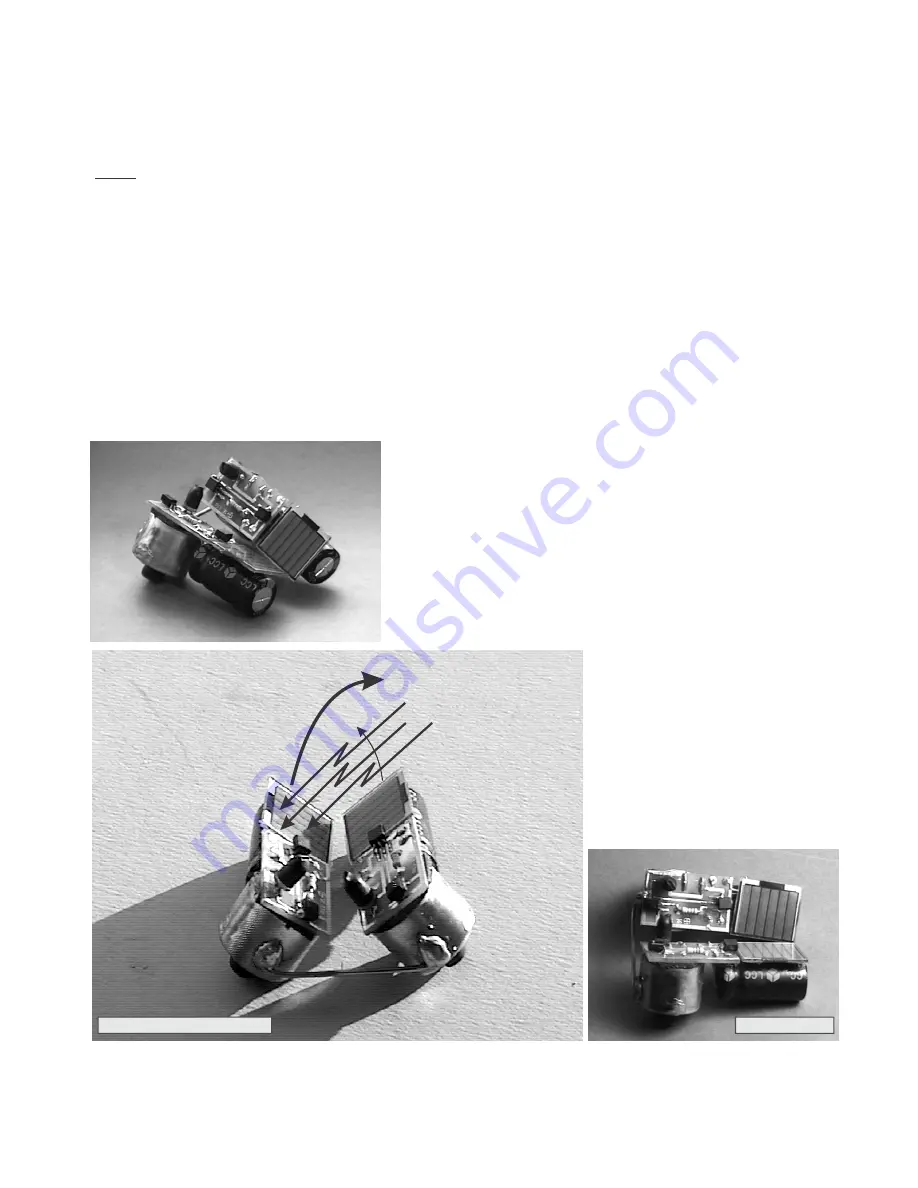
Advanced Ideas for your Solarengine
The Photovore Light-Seeking Robot!
Note: Ok, we cheated
a bit
- this is a Solar Engine project from a while back using a PCB instead of the new PCB-on-
the-back system. But the principles remain the same, so stop being so picky!
The Solarengine lets you make some interesting solar-powered devices, especially ones that can survive in lower
light levels with small solar cells. But to make something that is truly a robot with a built-in purpose-of-life, you have to
build something that is able to track & chase it’s food (light!). These are often called “Photovores”, from the Greek &
Latin meaning "Light-Eater".
This BEAM Photovore is such a creature. It’s made from two separate solarollers mounted side-by-side in a "V"-
shaped arrangement with a connecting crossbar, and with the solar cells facing inwards, towards each other.
When there is an uneven light falling on the Photovore, one solar cell gets more light than the other, making more
active than its mate. This more-active solarengine will tend to turn the whole device towards the light until the light
levels are about equal, and it will steadily move toward the light. This is called a behavior showing
positive
phototropism.
You could arrange the solarengines so they make the
robot scared of light (a Photophobe), but how much fun is it constantly
picking your robot out from underneath the couch where the killer
dust-bunnies live?
This particular Photovore is constructed entirely from the contents of
two
solarengine Kits and a piece of copper rod (the crossbar). The
pinchrollers from the metal cassette mechanisms were cut apart so
the rubber tire could be removed and stretched over the output shaft
of the motor, giving the Photovore much better traction.
To add more survivability, you can add touch sensors to the front, one
for each side, assigned to the opposite
side’s solarengine. Wire them so it
shorts out the power storage capacitor.
When the sensor is activated by an
obstacle, it will make your Photovore
pivot away from the obstacle until the
switch comes free - instant obstacle
avoidance!
Phototropic Behaviour Illustrated
Photovore Layout
Large turning movement
due to plenty of direct light
falling on the Solarcell
Small turning movement
because Solarcell is
in the shadow
Sunlight
12


















